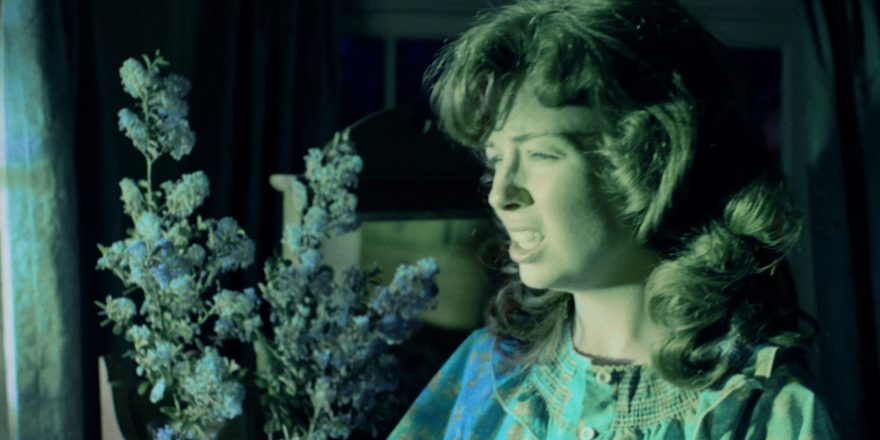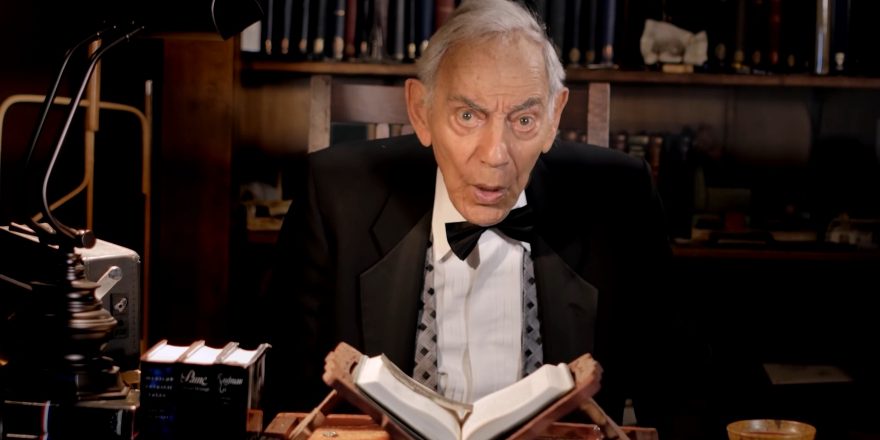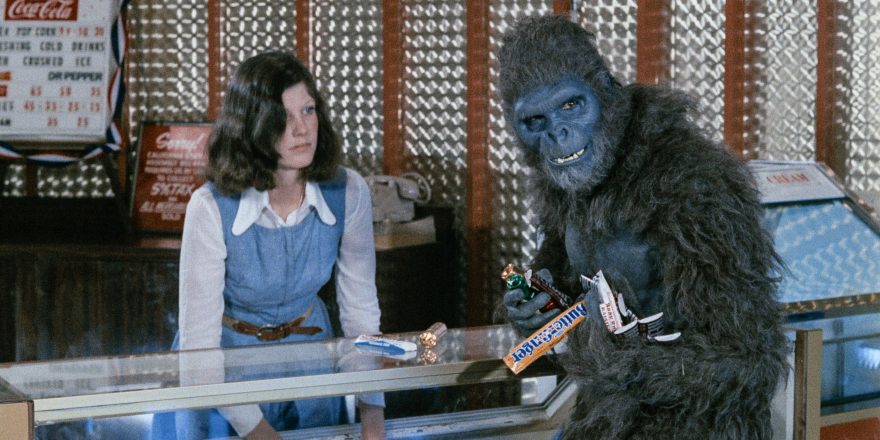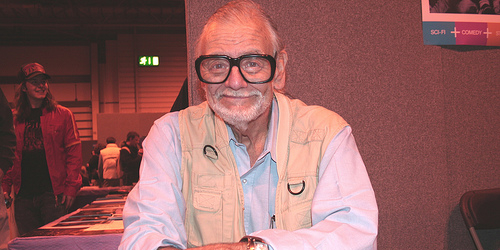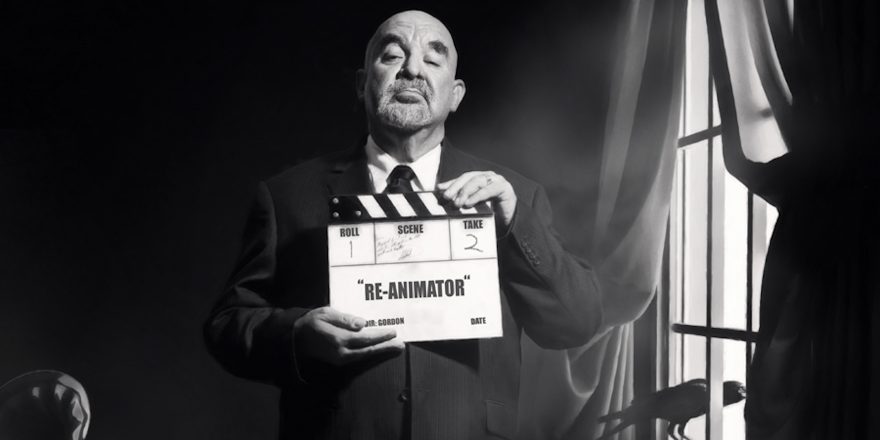When Norman J. Warren passed away last week at the age of 78, the world lost one of the most interesting and underrated British horror directors of his era, a creator of thrillingly original movies whose talent was matched only by his humility and good cheer. Discerning connoisseurs of cult cinema have long been well aware of Warren’s best films – Satan’s Slave (1976), Prey (1977), Terror (1978), Inseminoid (1981), and Bloody New Year (1987), all of which have been collected in Bloody Terror: The Shocking Cinema of Norman J. Warren 1976-1987, an indispensable Blu-ray boxed set from Indicator – but he still deserves to be better known and more widely celebrated than he was during his lifetime. I can only hope that his passing will inspire both old fans and new to plant themselves on their couches and revisit or discover his unique and rewarding filmography.

Warren got his start making amateur films with a home-movie camera before breaking into the industry as a producer’s assistant and editor, and his best work retains a kind of DIY charm. There’s a unique blend of handmade quirkiness and professional polish that makes the films pleasurable in a manner I find very specific to Warren – his movies lack the amateurish, ragged quality one frequently finds in low-budget exploitation cinema, but their slick craftsmanship hasn’t extinguished any of the material’s underlying eccentricities. And make no mistake about it – these are very eccentric films. Just to give an example, when Warren made Prey, it was because a producer came to him with the following premise: an alien looking for new food sources arrives on earth, takes human form and makes contact with a lesbian couple living in an idyllic country manor, learning in the process that humans are tasty and easy prey. The producer had no script yet, only 10 days to shoot, and the shoot had to begin in three weeks. Yet under this ridiculously tight deadline and with this decidedly peculiar concept, Warren and screenwriter Max Cuff managed to make a genuinely eerie psychodrama filled with black humor, erotic tension and a profoundly unsettling atmosphere of mounting dread, capped off by an audacious and hilarious visual punch line.
The rushed circumstances of many of Warren’s films, which often had scripts written under the gun and production schedules that would make Roger Corman sweat, inevitably produced logic gaps and odd inconsistencies in terms of character and pace. Yet in a weird way, even these “flaws” work to the benefit of the films. That’s because Warren is so brilliant at creating vividly inventive horror imagery that his style becomes a unifying force all its own; the jarring shifts in tone and behavior don’t feel like mistakes but add to the disorienting, nightmarish power of the films. Warren has such a keen eye for composition and movement, and such a consistent taste for in-camera effects that keep his movies from looking like anyone else’s, that even a hodgepodge like Bloody New Year – which plays like an off-the-wall cross between Sherlock Jr., The Evil Dead, The Shining and Tobe Hooper’s The Funhouse – holds together as a propulsive, frightening romp. In fact, Warren’s own misgivings about the film aside, I find it in some ways to be his most entertaining movie precisely because it’s so off the wall.
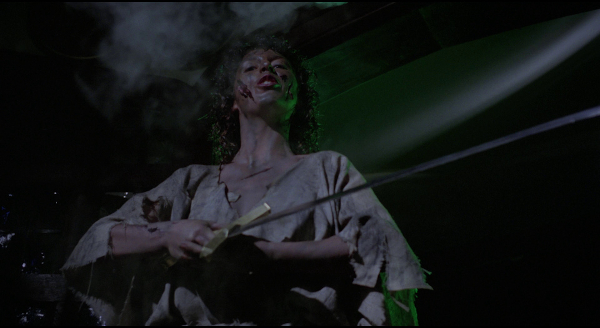
One of the many things I find fascinating about Warren’s cinema is that it feels like the product of an authentic artist, even though in almost every case the movies were reverse-engineered from some mundanely practical starting point – written to fit a location, or a schedule, or to capitalize on a hot trend (as in the case of his debut film, the softcore sex flick Her Private Hell, which is not included in the Indicator box). Rather than feel constricted by these parameters, Warren seems to have been liberated by them; Satan’s Slave, for example, takes full advantage of its limited location – an estate owned in real life by a baron and baroness who had fallen on hard times – to entrap and terrorize the characters and audience, with Warren all the while showing an Antonioni-esque sensitivity to architecture and space. (He gets even more visual and thematic mileage out of the same location in Terror, a sly satire of the low-budget film industry that’s even more dynamic and clever than Satan’s Slave.) I’m sure that Warren would have loved to have had more time and money to make his films, but being forced to constantly rely on his intuition and commit to his initial instincts seems to have served him well in the end – his frames teem with life and energy thanks to the frenetic impulses driving everyone behind and in front of the camera.
I think this is connected to the most surprising thing about Warren’s output, which is its innate good cheer. Warren is clearly a guy who had a lot of fun making movies, and his delight is infectious. Although Terror and the films that follow it have echoes of Dario Argento (Warren was very taken by Suspiria), they have a buoyancy that Argento’s films lack. They’re gory and graphic, but rarely unpleasant – Warren is out to scare you, but not repel you or make you feel unclean. His deliriously outlandish movies owe as much to classic Warner Bros. Looney Tunes and Merrie Melodies cartoons as they do to the horror and exploitation traditions to which they seem superficially closer. You feel invigorated and exhilarated by Warren’s brand of horror, not drained or pummeled, yet the movies more than deliver the elements their provocative titles and concepts promise. They’re graphic enough to satisfy any gorehound, yet somehow they never succumb to nihilism or lose touch with their humanity. I have no idea how Warren achieves these effects; I think they just derive from his personality and his passion for what he does. (The Blu-ray box contains literally dozens of hours of interviews with him, and he comes across as a really amiable fellow.)
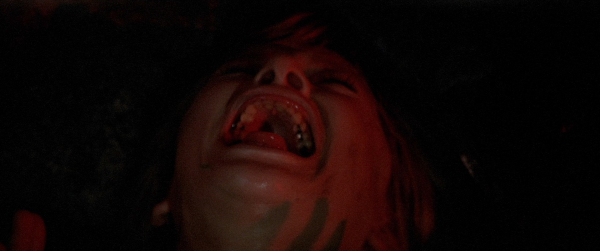
What’s most inspiring about Norman J. Warren’s career is that he neither fought nor became victim to the limitations placed on him but absorbed them into the very fabric of his movies and turned them into assets. When he uses old-school reverse motion effects or multiple exposures to create his illusions, the impact is greater than it would be with all the expensive digital razzmatazz of a Marvel epic, because it feels more human and affectionate. “Affectionate” might seem like an odd word to apply to something called Inseminoid, but there you have it – Warren’s affection for his characters, his loony situations (both onscreen and off) and for the magical properties of his medium, is obvious, irresistible, and essential.


